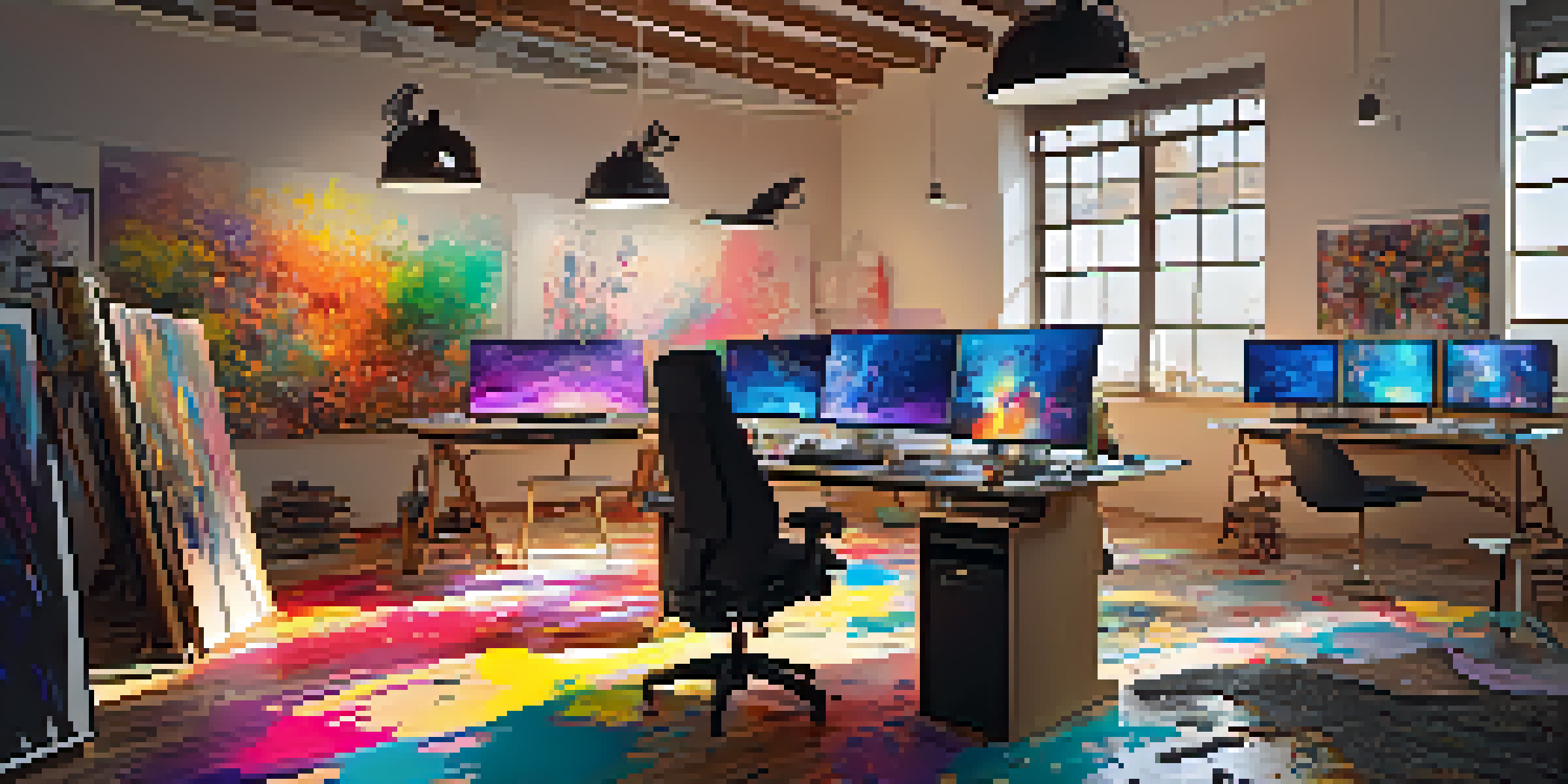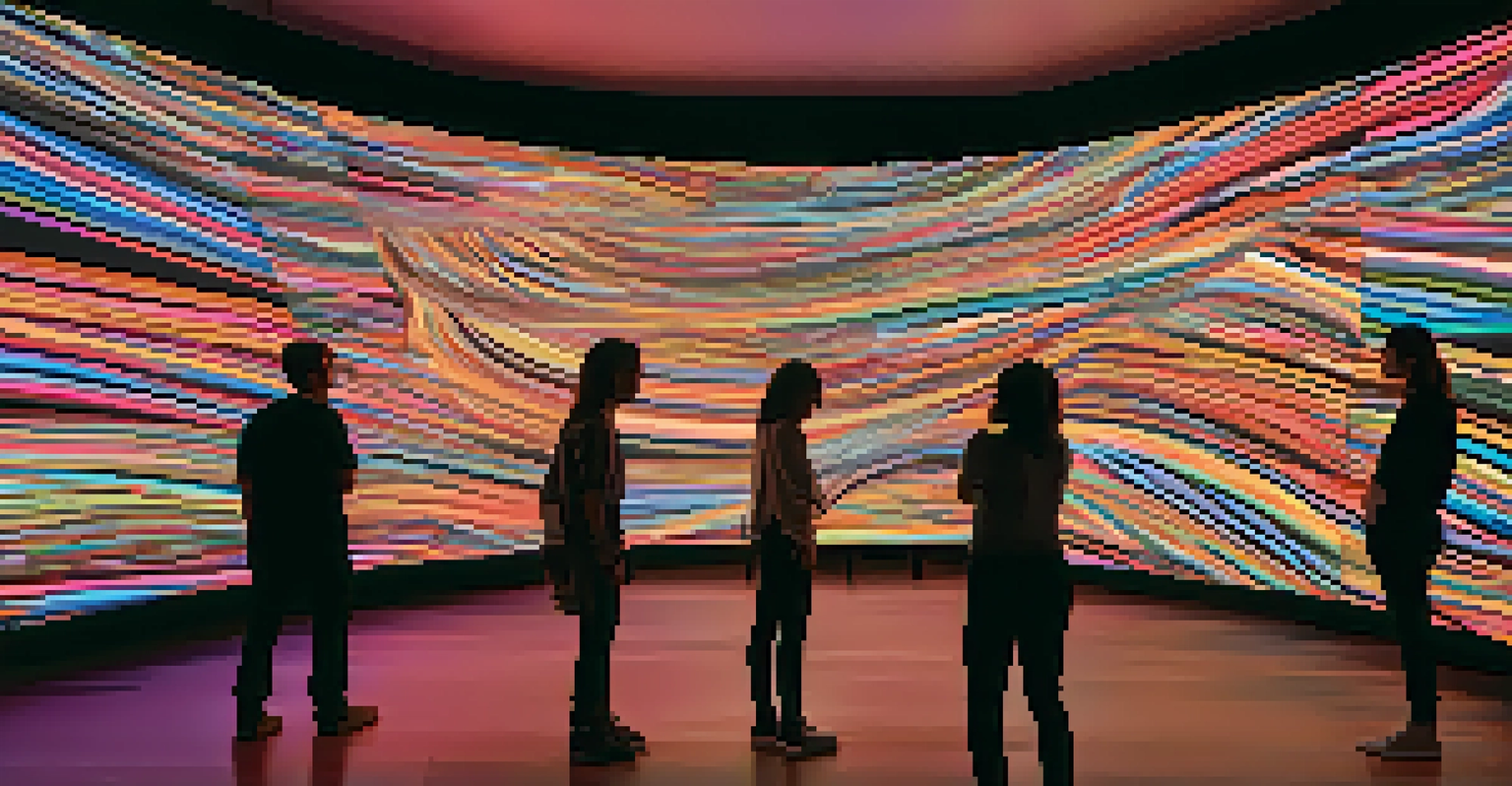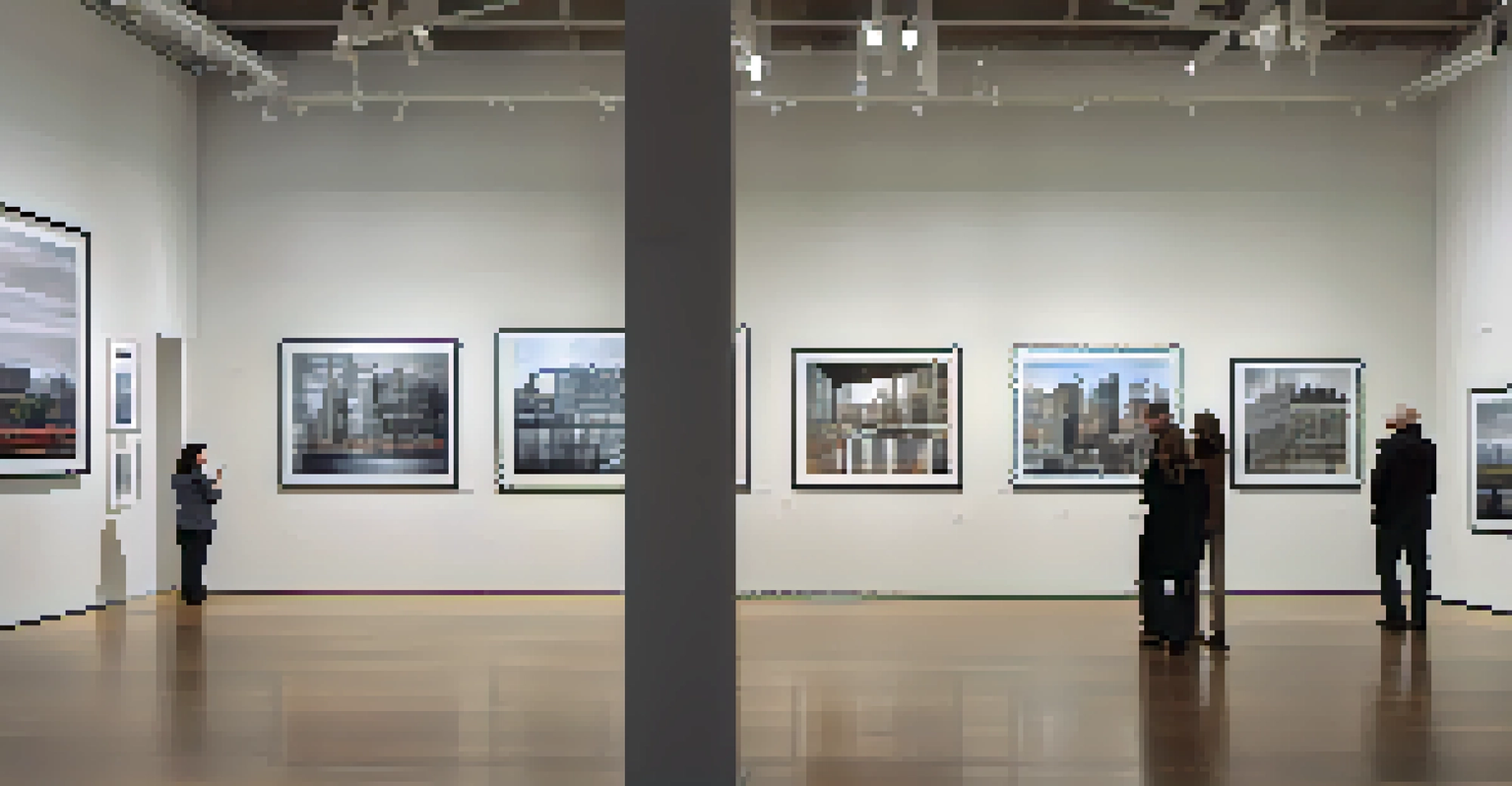The Role of Technology in Shaping Late 20th-Century Art

The Rise of Digital Art Forms in the 1980s
The late 20th century witnessed a significant shift with the emergence of digital art forms. Artists began to experiment with computers and software, creating pieces that were not only visually striking but also innovative in their execution. This period marked the transition from traditional mediums to digital canvases, allowing for an entirely new way of artistic expression.
Art is what you can get away with.
One key example is the use of Adobe Photoshop, which became a staple tool for artists. This software revolutionized the way images were manipulated and created, providing artists with endless possibilities to enhance their work. The ability to edit and combine elements digitally opened doors to styles and techniques that were previously unimaginable.
Related Resource
As digital art gained popularity, it also sparked discussions about what constitutes art in the modern age. The lines between painter and programmer blurred, challenging traditional definitions and inviting a broader audience to engage with art. This exploration of digital mediums helped set the stage for the diverse art forms we see today.
Video Art: A New Medium for Storytelling
Video art emerged in the late 20th century as a powerful medium for storytelling. Artists began using video technology to explore themes and narratives in ways that traditional art forms could not. This shift allowed for a dynamic representation of ideas, merging visual art with the temporal qualities of film and performance.

Pioneers like Nam June Paik utilized video to challenge perceptions of art and media, often incorporating television and film elements into their installations. His famous piece, 'TV Buddha,' exemplifies how video art can provoke thought and discussion about culture and technology. These innovative approaches brought a new dimension to how art could interact with audiences.
Digital Art Transforms Creativity
The rise of digital art in the 1980s allowed artists to explore innovative techniques, merging traditional and digital mediums.
The rise of video art also coincided with advancements in video technology, making it more accessible to artists. As cameras became more affordable and editing software improved, more creators could experiment with this medium. The result was an explosion of creativity that further blurred the lines between art, entertainment, and documentary.
Installation Art: Immersive Experiences
Installation art gained traction during the late 20th century, often incorporating technology to create immersive experiences. Artists began to utilize space, sound, and interactive elements, inviting viewers to engage with their work on a deeper level. This approach transformed the way art was perceived, emphasizing the experience of the viewer as a critical component.
The medium is the message.
For instance, works like Olafur Eliasson's 'The Weather Project' at the Tate Modern used light and space to create an ambient environment that captivated audiences. Visitors were not just passive observers; they were part of the artwork itself, experiencing it in real-time. This interaction challenged the notion of art as a static object and encouraged active participation.
Related Resource
The integration of technology in installation art also paved the way for innovative approaches to audience engagement. By incorporating elements like sound, projection, and even virtual reality, artists could craft multi-sensory experiences that left lasting impressions. This evolution reflects a broader trend in the art world, where technology continues to redefine how art is created and experienced.
The Influence of the Internet on Art Distribution
The advent of the internet in the late 20th century revolutionized how art was distributed and consumed. Artists gained new platforms to showcase their work, bypassing traditional galleries and reaching global audiences. This democratization of art allowed for greater visibility and opportunities for emerging artists.
Websites, online galleries, and social media platforms became crucial tools for artists to share their creations. The ability to post images, videos, and updates provided a direct line of communication with audiences, fostering a sense of community. Artists could now connect with fans and collectors without the barriers previously imposed by the art market.
Video Art Redefines Storytelling
Video art emerged as a dynamic medium that combines visual art with narrative, inviting deeper audience engagement.
Moreover, the internet facilitated the rise of digital art marketplaces, where artists could sell their work directly to consumers. This shift not only empowered artists financially but also encouraged a diverse range of styles and voices to flourish. The internet's impact on art distribution continues to shape the landscape of contemporary art today.
Art and Technology: Collaborative Projects
In the late 20th century, collaborations between artists and technologists began to emerge, leading to groundbreaking projects that blended creativity and innovation. These partnerships allowed for the exploration of new ideas and techniques, pushing the boundaries of what was possible in art. By working together, artists and technologists created works that challenged traditional art forms.
One notable example is the collaboration between artists and computer scientists to create interactive installations. These projects often used sensors, robotics, and artificial intelligence to engage viewers in unique ways. The merging of art and technology not only resulted in visually stunning pieces but also provoked thought about the relationship between humans and machines.
Related Resource
Such collaborations also raised questions about authorship and the role of the artist in the creative process. As technology became more involved, the definition of an artist expanded to include those who conceptualized ideas rather than solely executed them. This evolution reflects a broader trend in contemporary art, where interdisciplinary approaches are increasingly valued.
The Role of Photography in Contemporary Art
Photography experienced a renaissance in the late 20th century, evolving from a mere tool for documentation to a respected art form. Advances in camera technology and digital editing transformed photography, allowing artists to manipulate and reinterpret reality. This shift encouraged photographers to experiment with new styles and concepts, further establishing photography as a legitimate medium within the art world.
Artists like Cindy Sherman and Andreas Gursky pushed the boundaries of photography, using their work to comment on society, identity, and consumer culture. Sherman's staged photographs, for instance, challenge traditional notions of representation and femininity, while Gursky's large-scale images capture the complexities of modern life. These innovative approaches demonstrated the power of photography to convey deeper messages.
Internet Revolutionizes Art Access
The internet democratized art distribution, enabling artists to connect with global audiences and sell their work directly.
Moreover, the rise of digital photography made the medium more accessible to aspiring artists. With smartphones and affordable cameras, anyone could capture and share their vision. This democratization of photography not only expanded the pool of artists but also broadened the conversation around what constitutes art in the digital age.
The Evolution of Art Critique in the Digital Age
As technology reshaped the art world, it also transformed the way art is critiqued and discussed. The rise of online platforms and social media gave art critics and audiences new avenues to engage with contemporary works. This shift allowed for a more diverse range of voices and perspectives to enter the conversation, enriching the discourse around art.
Critics began to explore the implications of technology on art, examining how digital tools influenced aesthetics and themes. This new lens of critique challenged traditional art criticism, prompting discussions about the relationship between art and technology. The dialogue expanded beyond galleries and museums to include online forums, blogs, and social media, where opinions could be shared instantly.

Additionally, the accessibility of digital art led to a more inclusive environment for critique. Artists and audiences alike could participate in discussions, providing feedback and insights that might have been overlooked in traditional settings. This evolution of art critique reflects the ongoing impact of technology on the art world, fostering a more collaborative and dynamic landscape.